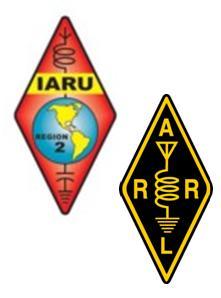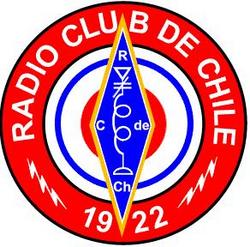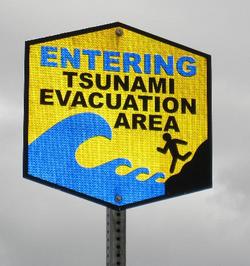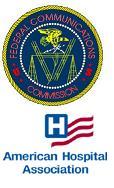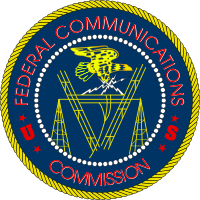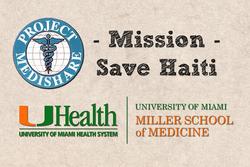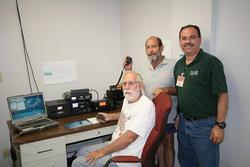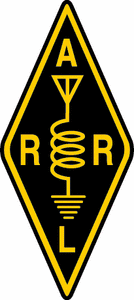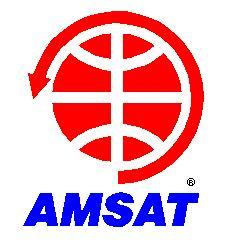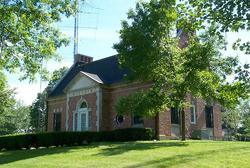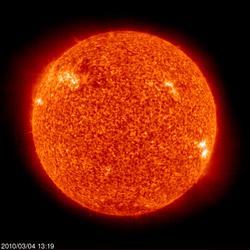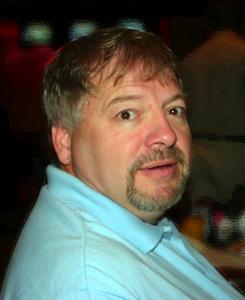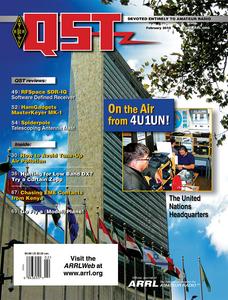 March 4, 2010 John E. Ross, KD8IDJ, Editor
| ||||||||||||||||
ARRL Seeks Input for New IARU Region 2 Band Plan
The International Amateur Radio Region 2 conference -- held later this year in El Salvador -- brings together delegations from the national Amateur Radio Societies in the Western Hemisphere. One of the topics on the agenda will be the Region 2 HF band plan. This band plan is "harmonized with" -- spectrum management-speak for "very similar to" -- the IARU Region 1 and Region 3 band plans. At this year's conference, the IARU Member-Societies will consider possible changes to the Region 2 band plan. The ARRL is cooperating with this procedure by inviting input to be sent to the ARRL Board of Directors' Band Planning Committee. The committee will review the existing Region 2 band plan, consider input from the amateur community and make recommendations to the ARRL Board for submission to IARU Region 2. Read more here. Public Service: Radio Club de Chile Active after Earthquake
On Monday, March 1, IARU Region 2 President Reinaldo Leandro, YV5AMH, spoke via telephone with Radio Club de Chile (RCCH) President Dr Galdino Besomi, CE3PG, regarding the 8.8 magnitude earthquake that struck the South American nation on Saturday, February 27. "He informed me that soon after the earthquake, an Emergency Net was activated in the whole country -- first on VHF and then on HF. All the RCCH Board and club members are actively working in close coordination with civil and military authorities," Leandro posted to the IARU Region 2 e-mail reflector. "Three days after the earthquake, the requests for news about people in the affected areas is one of the main activities occupying the Chilean radio amateurs." Public Service: Hawaii Hams Spurred to Action by Chilean Earthquake
On Saturday, February 27 -- in reaction to a tsunami warning triggered by the Chilean earthquake -- 60 Amateur Radio operators participated in a tsunami radio net that operated throughout the island State of Hawaii. More than 25 real-time reports from observers around the state were relayed simultaneously to the State Emergency Operating Center (EOC) and the four county EOCs, providing timely information via Amateur Radio on sea level changes to emergency management officials. Read more here. FCC News: FCC Seeks Comments for Blanket Waiver to Allow Amateur Radio in Hospital Emergency Drills
In February 2010, the American Hospital Association (AHA) filed a request with the FCC for a blanket waiver of Section 97.113(a)(3) of the Commission's Rules "to permit hospitals seeking accreditation to use Amateur Radio operators who are hospital employees to transmit communications on behalf of the hospital as part of emergency preparedness drills." On March 3, the FCC issued a Public Notice -- WP Docket 10-54 -- seeking comments if the Commission "should grant AHA's request for a blanket waiver of Section 97.113(a)(3) to permit amateur operators who are hospital employees to participate in emergency drills that are conducted by hospitals for accreditation purposes and that are not government-sponsored."Section 97.113(a)(3) specifically prohibits amateur stations from transmitting communications "in which the station licensee or control operator has a pecuniary interest, including communications on behalf of an employer." Read more here. FCC News : FCC Denies ARRL's Request for Declaratory Ruling
In 2005, after the State of Florida adopted statutes aimed at pirate broadcasters and making it a felony to make a radio transmission without Commission authorization or to interfere with a licensed public or commercial radio station, the ARRL -- through General Counsel Chris Imlay, W3KD -- filed a Request for Declaratory Ruling (Request) with the FCC, seeking a declaratory ruling on portions of that statute. The ARRL argued that the statute was written so broadly that one could infer that Commission-licensed Amateur Radio stations in Florida would be subject to felony prosecution if their transmissions interfered with broadcast or other radio receivers. In 2006, New Jersey adopted a similar statute and the ARRL's Request was modified to include that state. Five years and one day after the original Request was filed with the Commission, the FCC denied the Request. Read more here. FCC News: FCC Reaffirms Statement on ROS In mid-February, European amateurs first used a new, experimental digital mode known as ROS. On February 23, 2010 -- after FCC review of the original documents provided from the developer's Web site -- the FCC made a statement on ROS. The ARRL supports -- as one of the basic purposes of Amateur Radio -- the experimentation and advancing the technical skills of operators. The development and use of any new mode is exciting to many amateurs, and the League encourage amateurs to experiment within the parameters of the rules; however, the ARRL also reminds US licensees that according to Section 97.307, spread spectrum communications are only permissible in the US on frequencies above 222 MHz. Read more, including what the FCC had to say about ROS, here. Public Service : Amateur Radio Operators Wrap Up Communications Support in Haiti
After the 7.0 magnitude earthquake struck the island nation of Haiti on January 12, many Amateur Radio operators asked how they could volunteer their time and service to assist with communications support. When Project Medishare -- a partnership between the University of Miami Medical School (UM) and physicians and health officials in Haiti -- needed help with their communications, Amateur Radio operators were quick to respond. According to Jack Satterfield, W4GRJ/AFA4DG, Medishare has constructed several health clinics in Haiti over the years -- all of which were destroyed in the earthquake. "Medishare was able to rapidly deploy medical teams and assets to begin the overwhelming task facing the post earthquake medical needs," he told the ARRL.
"UM Vice President for Facilities and Operations Ron Bogue was the Director in Charge of the Haiti operations. His concern about the unreliable communications caused him to contact Julio Ripoll, WD4R, with whom he has worked for years as the architect for UM Medical facilities. Ron knew that Julio is a ham radio operator and very involved with the National Hurricane Center in Miami and its Amateur Radio station, WX4NHC. Ripoll then contacted ARRL to request help in soliciting volunteers. ARRL immediately sent down an HF Go Kit -- through the ARRL's Ham Aid Program -- and put Ripoll in touch with ARRL West Central Florida Section Emergency Coordinator and Navy MARS Florida State Deputy Director Neil Lauritsen, W4NHL/NNN0TFH. Read more here. ARRL In Action : What Have We Been Up to Lately?
This feature -- including convenient Web links to useful information -- is a concise monthly update of some of the things ARRL is doing on behalf of its members, including holding elections for and appointing people to League leadership positions, preparing for WRC-12, legislative actions, providing equipment for communications support in Haiti through the ARRL's Ham Aid program, developing on-the-air events, investigating power line noise and more. This installment covers the month of February. Read more here. ARRL Executive Committee Meeting Agenda Now Available
At its January 2010 meeting, the ARRL Board of Directors decided to make the agendas of Board and Executive Committee meetings available on the ARRL Web site. The first opportunity to do so is for the Executive Committee meeting to be held March 13. The agenda is available here. Amateur Radio in Space: A Close Encounter for AMSAT-OSCAR 51
While many in North America were fast asleep Monday morning, March 1, the AMSAT-OSCAR 51 (AO-51) satellite had a potentially dangerous encounter with another spacecraft known as Formosat 3D. OSCAR 51 is a popular Amateur Radio satellite that often functions as a crossband FM repeater, relaying brief conversations over hundreds of miles. Formosat 3D is part of a constellation of six remote sensing microsatellites that collect atmospheric data for weather prediction and for ionosphere, climate and gravity research. Both orbit at an altitude of approximately 500 miles. Read more here. W1AW Announces New Schedule for Digital Bulletin Transmissions
Beginning Monday, March 15, W1AW, the Hiram Percy Maxim Memorial Station, will alternate the digital modes used for its digital bulletin transmissions. While Baudot, PSK31 and MFSK16 still make up the digital mode complement, W1AW Station Manager Joe Carcia, NJ1Q, says that the schedule will be altered to give more exposure to PSK31 and MFSK16. "Because of time constraints and the varying lengths of digital bulletins, there were many instances where only Baudot was used," he said. "With the new schedule, amateurs preferring either PSK31 or MFSK16 will no longer find these modes secondary." Read more here. Solar Update
Tad "The Sun shines hot and the wind blows cold" Cook, K7RA, reports: The sunspots just keep coming: Two new sunspot groups appeared on March 1, numbered 1052 and 1053. This brings the total number of sunspot groups appearing over the last month at 11. Looking at our 3-month moving average of daily sunspot numbers, the latest for December-January-February is 22.4, for the period centered on January. The 3-month moving averages for the periods centered on July through January were 4, 4, 4.64, 7.1, 10.16, 15.15 and 22.4. The average sunspot number for the month of February was 31, up from 21.3 for January and 15.7 for December. The February average being 8.6 points higher than the trailing three month average (22.4) is a good trend. Look for more information on the ARRL Web site on Friday, March 5, including more news from happy radio amateurs commenting on improved conditions on the higher part of the HF spectrum. The vernal equinox occurs in a little over two weeks, ushering in good spring conditions. For more information concerning radio propagation, visit the ARRL Technical Information Service Propagation page. This week's "Tad Cookism" brought to you by Charles Dickens' Great Expectations. Silent Key : TAPR President Emeritus Dr David Toth, VE3GYQ (SK)
Dr David Toth, VE3GYQ -- President Emeritus of Tucson Amateur Packet Radio (TAPR) -- passed away Friday, February 26 after a long battle with cancer. He was 55. A resident of Spencerville, Ohio, Toth served as a Director and Executive Vice President of TAPR in the 1980s and was elected President of the organization in September 2005. With his advancing illness, he decided not to stand for re-election last October and was instead named President Emeritus with Steve Bible, N7HPR, taking the reins as TAPR President. Read more here. W1AW News: March W1AW/West Coast Qualifying Run Schedule The March schedules for the W1AW and West Coast Qualifying Runs were inadvertently left out of the March issue of QST. The March schedules for W1AW are as follows: Friday, March 5 at 10 PM EST (Saturday, March 6 at 0300 UTC) for 10-25 WPM and Tuesday, March 16 at 7 PM EDT (2300 UTC) for 10-40 WPM. The West Coast Qualifying run will be transmitted by station K6KPH on Saturday, March 13 at 2 PM PDT (2200 UTC) for 10-35 WPM. The run will be transmitted simultaneously on 3581.5, 7047.5, 14047.5, 18097.5 and 21067.5 kHz. This Week on the Radio This week, look for the ARRL International DX Contest (SSB) on March 6-7. The Wake-Up! QRP Sprint is March 6 and the DARC 10 Meter Digital Contest is March 7. The CLARA HF Contest is March 9-10 (continuing on March 13-14) and the CWops Mini-CWT Test is March 10-11. Next week, the Feld Hell Sprint is March 13. The RSGB Commonwealth Contest, the Elecraft QSO Party and the Idaho QSO Party are March 13-14. The North American Sprint (RTTY) and the SKCC Weekend Sprint are March 14. The Wisconsin QSO Party is March 14-15 and the NAQCC Straight Key/Bug Sprint is March 18. All dates, unless otherwise stated, are UTC. See the ARRL Contest Branch page, the ARRL Contest Update and the WA7BNM Contest Calendar for more info. Looking for a Special Event station? Be sure to check out the ARRL Special Event Station Web page. ARRL Recognizes: Paul Christensen, W9AC, Wins February QST Cover Plaque Award
The winner of the QST Cover Plaque Award for February is Paul Christensen, W9AC, for his article "An SWR Null Meter." Congratulations Paul! The winner of the QST Cover Plaque award -- given to the author or authors of the best article in each issue -- is determined by a vote of ARRL members on the QST Cover Plaque Poll Web page. Cast a ballot for your favorite article in the March issue by Wednesday, March 31. ARRL Continuing Education Course Registration
Registration remains open through Sunday, March 21, 2010, for these online course sessions beginning on Friday, April 2, 2010: Amateur Radio Emergency Communications Level 1; Antenna Modeling; Radio Frequency Interference; Antenna Design and Construction; Ham Radio (Technician) License Course; Propagation; Analog Electronics, and Digital Electronics. To learn more, visit the CEP Course Listing page or contact the Continuing Education Program Coordinator. | ||||||||||||||||
